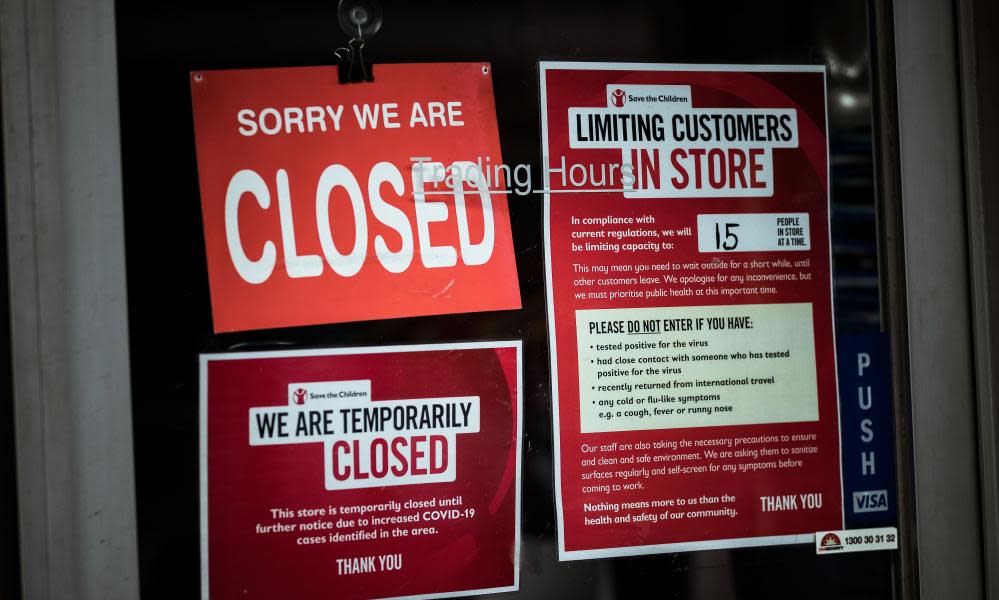Unemployment in Australia only 4.5%? Wait until I stop laughing

As has happened so often since the pandemic reached our shores, I run my eyes down the bureau of statistics spreadsheet and I laugh.
Are we really supposed to pretend this is reality?
I am someone who has spent rather a long time explaining to people, on both this page and social media, that you can trust the unemployment numbers.
No, they are not rigged. The numbers are not skewed due to some fiddling by the Morrison government. The ABS does not check with the treasurer first before releasing them, and please, please, please, it truly does not greatly matter that just one hour of employment a week is counted as employed.
But right now the unemployment rate is to reality like a rather befuddled puppy is to a tennis ball that its owner pretended to throw but is actually still in their hand.
Related: Australian economy survived Covid better than most but recovery could slow, OECD says
Where did it go?! Oh heck, let’s just keep running around and say only 4.5% of the labour force is unemployed and hope that at some point everyone stops laughing and reality is again able to be caught.
I mean, sure there have only been 23 months out of the 523 since the ABS started counting monthly unemployment where the rate has been below 4.5%. I’m sure, as we look around the nation, we must be in an economic boom.
Or not.
To be honest, it’s not the fault of the bureau of statistics. The problem is that the unemployment rate is not made for these times.
How do you count unemployment when in August there were more people (620,200) who were notionally employed but who worked zero hours because there were no shifts to work than there were actual people who were looking for work (617,100)?
If the graph does not display click here
And it really isn’t helped that the rate that covers the whole of Australia is having to deal with a situation where the whole of Australia is essentially split into the south-eastern seaboard and the rest:
If the graph does not display click here
The unemployment rate was not constructed to deal with a situation where the number of people employed fell by 146,300 and at the same time the number of people looking for work fell by 21,900.
When more than 1% of those with a job in July lose it in August and yet the total number of people unemployed also falls, you know things are taking a large dose of the silly pills.
Close to 170,000 people left the labour force (ie people employed and unemployed) – the third biggest ever fall behind April and May last year. Those people are not counted as unemployed because they were not looking for work, because, if you lived in NSW there was not a lot of point in trying.
All up, things are not as they should be, and it means the unemployment rate is missing a lot.
If we include the 170,000 who left the labour force in August, the unemployment rate goes from the near-13-year low of 4.5% to 5.7%. If we then also include the 620,000 who are apparently employed but in reality are not working at all, then up it goes to 9.7%.
If the graph does not display click here
Suffice to say, 9.7% is not the best unemployment rate we have had since 2008.
And yet, even this is problematic because while the increase in zero hour employees rose in NSW, Queensland and Victoria, it didn’t for example in Western Australia, and in Victoria the participation rate rose rather than fell, so in that state there was not actually an increase in people “giving up”:
If the graph does not display click here
The good things is the bureau of statistics does give us the numbers to discern some semblance of reality, either by doing a bit of maths to include those working zero hours or by looking at the underemployment rate, which increased significantly in August:
If the graph does not display then click here
And yet even this measure is struggling during the Covid period, given in May the underemployment rate of 7.4% was the best it had been for seven years, which reflects not so much the health of the economy but the lack of population growth – and thus an increase in the labour force.
To an extent, none of this matters as long as no one in power takes the numbers too seriously.
In the past, 4.5% would have been met with cheers and celebrations; that even the government is not suggesting it means what it normally would is a good thing.
The unfortunate aspect, however, is the disconnect with reality will likely continue for a couple months, all of which makes it tougher to know the strength of the underlying economy and once the lockdowns ease whether things will bounce back, or if the recovery will be more muted this time around.
Greg Jericho writes on economics for Guardian Australia

 Yahoo Movies
Yahoo Movies 
